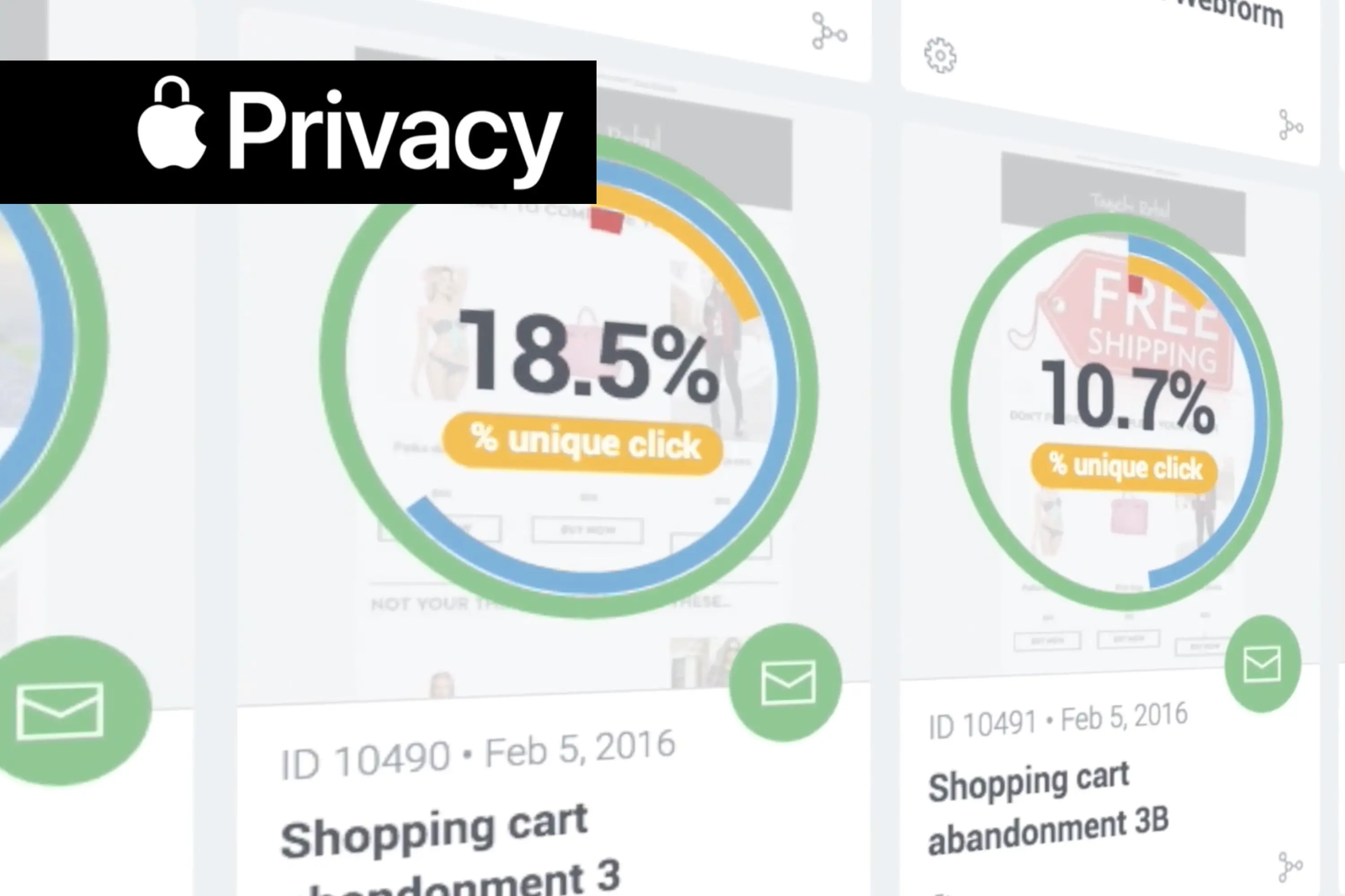Apple's privacy changes will spark an evolution for marketers
To say that Apple’s recent privacy protection changes have caused widespread discussion and debate in the adtech and martech worlds would be a giant understatement. Since these changes will impact tracking across all Apple devices, the way advertisers and marketers profile and target customers must evolve. This will be especially true for when major inbox providers such as Microsoft and Google follow suit.
From a marketing automation perspective, the issues raised by these changes are not insurmountable; in fact, some of the changes will improve marketing programs and campaign outcomes. For example, if you are using open tracking as an event to trigger follow-up or retargeting communications, you will have to reconsider these drivers. Likewise for A/B and multivariate testing. However, once email content clicks and conversion rates are factored into your testing, these algorithms will provide a more meaningful result than just using open rates as many do today.
For email marketing in general, the main concern seems to relate to measuring campaign engagement and performance. It will certainly mean there will need to be a change to the weighting or importance many marketers place on open rates in relation to the email engagement. So, if you can’t rely on the open rate, what do you rely on to measure performance? My answer to that question hasn't changed in the 17 years I’ve been involved with email marketing, and I covered this topic in a previous blog on benchmarks. As a metric, open rates are a useful high-level engagement “temperature check”, but have always been subject to interpretation and measurement error. They are not the best way to measure the effectiveness of the email marketing or marketing automation programs. Ultimately unless you are perhaps a publisher, you probably don't sell “opens” for a living. As a speaker at a conference I once attended said, “Wall Street doesn’t care about your open rates”.
So, what is important to measure? Conversion and ROI from email has always been the gold standard for measuring email performance. In the absence of conversion, open rates have become a proxy for measuring campaign success. For example, if the objective of the email was to sell more product, get more subscribers or to increase call centre enquiries, then use those events to measure performance of the email and to drive future campaign development. Knowing how much money you make from each email you send is a powerful metric to understand. It can influence every decision from what volume or frequency is optimal through to how much you should invest in resourcing your programs. Open rates won’t tell you any of that. That is why within our Taguchi Marketing Automation platform, metrics such as conversion rate, total sales value value, value per email sent and click-to-conversion rate (to name a few) come out-of-the-box. We have always recognised that in order for our clients to continually improve their programs, they will need to measure beyond standard engagement metrics. If it isn’t already, consider making conversion your primary metric.
Another potential aspect that hasn't been covered much relates to the possible increase in click throughs as a result of the Apple changes to email open tracking. Traditionally email clients (email browsers), either by default or by user selection, provided the ability to block images from loading in emails. This was an early attempt to preserve user privacy, since blocking all images would prevent tracking pixels being loaded. As open tracking depends on these tracking pixels being loaded, blocking images by default limited open tracking accuracy in a similar way to Apple’s upcoming changes. Ironically if the previous “block images” functionality is now unnecessary (because Apple blocks tracking pixels specifically) then images should load by default as doing so has no privacy impact. Thus, while marketers will have less insight into the open rate, more of the content in the email may be seen by the recipient than before. This may in turn lead to an increase in clicks on the links associated with those images. Keep an eye out for this effect over time.
These Apple changes, combined with both Google’s previous “privacy-first web” changes and the broader ever evolving global privacy legislative frameworks, ensure that the online advertising environment is going to continue to face significant challenges especially for third-party intermediaries. As the adtech space grapples with its ability to personalise and target, its value proposition will become less attractive to marketers. This ongoing online privacy evolution will undoubtably shift companies to prioritise their focus on customer database growth initiatives, loyalty programs and the improved use and development of quality martech solutions to power their various first-party data-driven marketing programs. Companies with direct access to their own marketing database are less vulnerable to many of the challenges that exist in trying to access and profile audiences managed or owned by third parties.
Paying advertising platforms to target segments of “their” audience can be relatively cheap and easy to execute because a third party (e.g., Facebook) does the technical heavy lifting. In comparison, a properly managed and operated in-house martech solution takes much greater ongoing focus and effort. However, a quality marketing database is a strategic investment in a significant company asset that provides an ongoing competitive advantage. Competitors don’t have access to this audience. Clearly I have a bias given my position but belief in this fundamental concept is why we started Taguchi in the first place. Owning the direct connection to an audience wherever possible should remain a primary marketing objective, if you want to be less vulnerable to the head winds (and fluctuating costs) of advertising, online or otherwise.
There’s no doubt that as a result of these privacy changes implemented by Apple along with the others I’ve mentioned above, there will be some scrambling and panic while everyone adjusts their programs. Ultimately however, if you stick to developing the size and sophistication of your in-house database programs and focus on tangible outcomes like conversion and ROI, you will ride out these changes, be less reliant on external audience vendors and develop a sustainable competitive advantage and asset.








